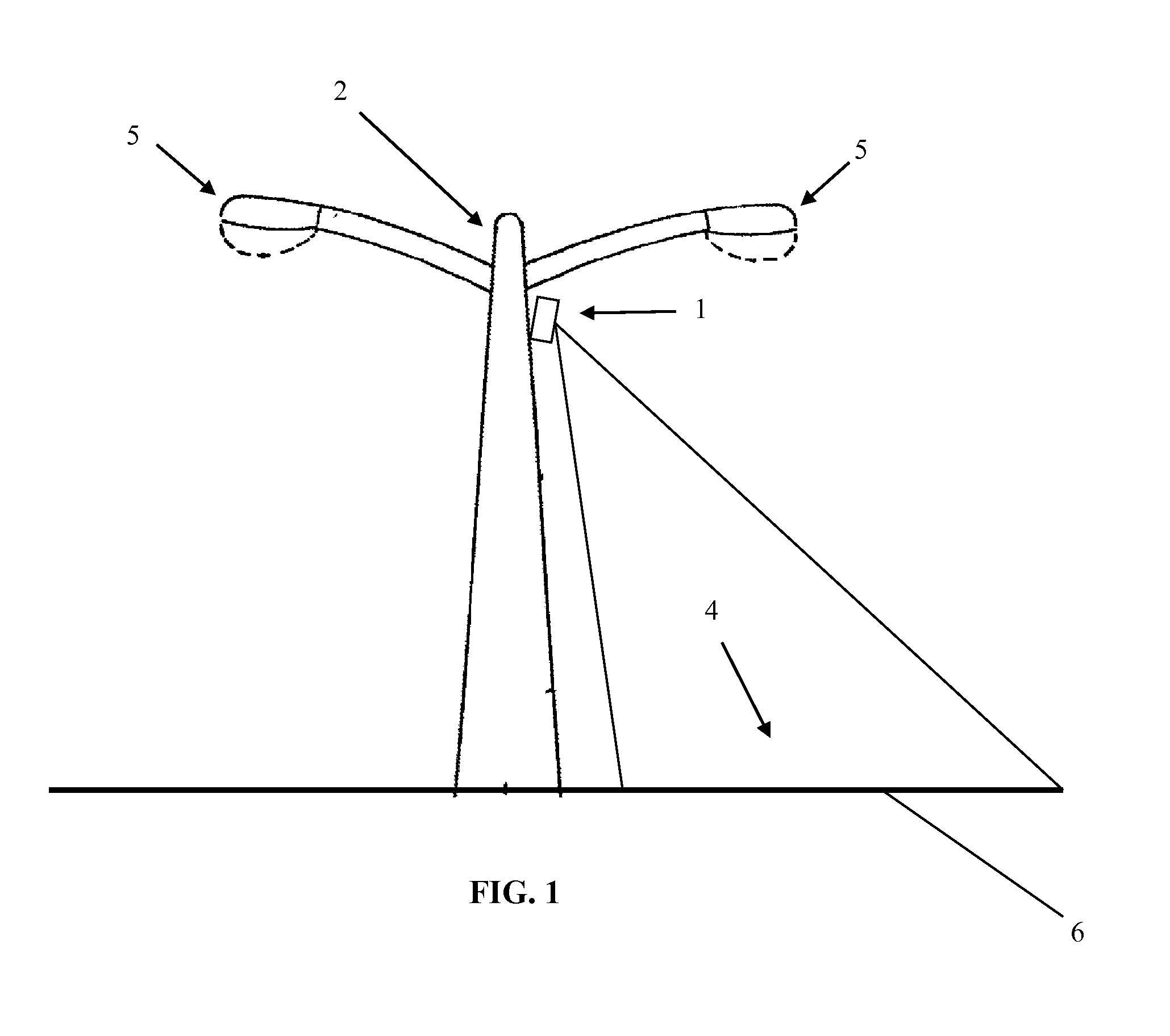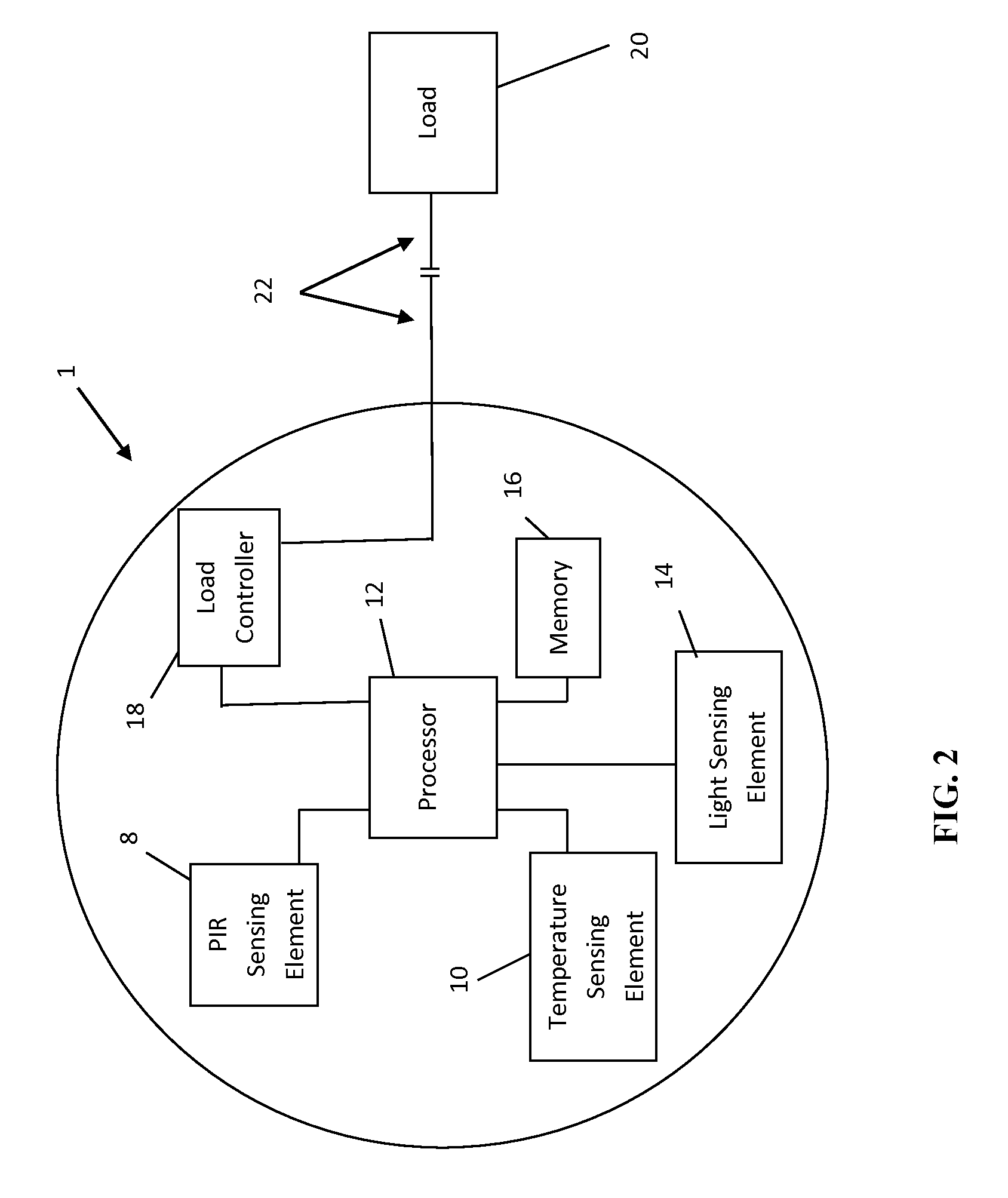System and method for occupancy sensing using adjustable detection and load control profile
a technology of occupancy sensing and load control, which is applied in the direction of computer control, process and machine control, instruments, etc., can solve the problems of pir occupancy sensors being less able to distinguish the heat signature of a human body from the background heat signature of the surrounding environment, and unable to accurately detect the temperature produced by a human body or an automobile within a wide range of ambient temperature, so as to maximize the own performance and optimize the operation of a lighting system
- Summary
- Abstract
- Description
- Claims
- Application Information
AI Technical Summary
Benefits of technology
Problems solved by technology
Method used
Image
Examples
Embodiment Construction
[0017]The disclosed system and method may find use in lighting control systems, which, in some embodiments, are outdoor lighting control systems. In exemplary embodiments, a PIR occupancy sensor can be fine-tuned for best performance by modifying the pre-processing and / or post-processing of a signal from a PIR sensing element in response to changes in ambient temperature. In other embodiments, an occupancy sensor can sense changes in daylight that occur near sunset and sunrise in order to estimate a close approximation of time of day, and can use this estimation to vary operational parameters of the occupancy sensor. Non-limiting examples of operational parameters include, but are not limited to, time delay before turning off an associated load and sensitivity adjustment thresholds.
[0018]FIG. 1 shows an exemplary outdoor application in which an occupancy sensor 1 is mounted on an upper region of a light pole 2 so that the sensor can monitor a portion 4 of a parking lot 6 illuminated...
PUM
 Login to View More
Login to View More Abstract
Description
Claims
Application Information
 Login to View More
Login to View More - R&D
- Intellectual Property
- Life Sciences
- Materials
- Tech Scout
- Unparalleled Data Quality
- Higher Quality Content
- 60% Fewer Hallucinations
Browse by: Latest US Patents, China's latest patents, Technical Efficacy Thesaurus, Application Domain, Technology Topic, Popular Technical Reports.
© 2025 PatSnap. All rights reserved.Legal|Privacy policy|Modern Slavery Act Transparency Statement|Sitemap|About US| Contact US: help@patsnap.com



